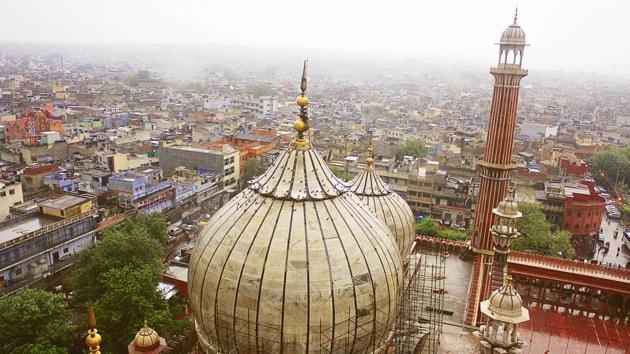Metro Matters | Ahmedabad’s lesson for Delhi: heritage is pride, not a liability
With 174 national monuments, including three UNESCO-listed heritage sites and more than 1,000 culturally important places, the national capital is one of the oldest continuously inhabited cities in India.
Congratulations to Ahmedabad for becoming the first Indian city to get the UNESCO’s world heritage city status on July 8. The Gujarat capital will be now in the ranks of Paris, London, Cairo and Rome as, to quote the UN body’s description of the inscribed cities, “a masterpiece of human creative genius”.

The 600-year-old walled city of Ahmedabad that has got the coveted tag has a lot to showcase to the world. A walk around its gated lanes lined with intricately wood-carved houses called ‘pol’ can take one back in time.
Talking of heritage cities, however, one couldn’t help but wonder why Delhi has not been officially recognised as one. With 174 national monuments, including three UNESCO-listed heritage sites and more than 1,000 culturally important places, the national capital is one of the oldest continuously inhabited cities in India.
Delhi was, in fact, in the race for the world heritage city status. The nomination made for “the imperial cities of Delhi” included the Mughal-built Shahjahanabad and the British-built Lutyens’ Bungalow Zone. Detailed dossiers were prepared and inspections were made.
Read: DDA’s lesson: Cheap housing in Delhi doesn’t have to be shabby
But in May 2015, the Union government withdrew the candidature stating that a heritage status to the national capital could come in the way of its urban development. Experts have interpreted it as an indication of the government’s plans to relax laws to build high-rises, flyovers, tunnels and allow other big construction projects close to Delhi’s heritage sites.
There is no denying that Delhi, packed with 17 million people, needs continuous infrastructure upgrades to accommodate the growing civic demands. It needs denser neighbourhoods and more mobility options for its citizens. And there is only so much a city can expand. But why could not we leave certain heritage zones untouched? Delhi was, after all, seeking world heritage status for less than 4% of its area.
We anyway don’t need big construction projects to bring down our heritage buildings. Take Shahjahanabad, for example. It is for a reason that the nearly 400-year-old Mughal city is clubbed with slums and unauthorised colonies in contemporary civic planning. Residents and shopkeepers have constructed warehouses and added floors to buildings that have weakened with age.
This expansion has continued without any sanctioned plans. The civic agencies confess that they do not even know the extent of illegal commercialisation in the walled city that is Delhi’s wholesale trade hub, and there is never enough staff to conduct the inspection of old, crumbling buildings.
The Chandni Chowk redevelopment plan — that promises a cleaner skyline (by tucking away overhead cables), vehicle-free roads and ample parking space — has been “inaugurated” twice since 2005. The new bylaws for heritage building have not been notified for two years. It was only last week that the Delhi’s Lieutenant Governor announced that he would visit the old town for an official inspection.
Read: Why chasing toilet numbers not enough for sanitation
Lutyens’ Delhi is well preserved for now. Designed as a flat city a 100 years ago, it is the only part of the town that has unrestricted walking space along its tree-lined avenues. The ridge forest and numerous parks act as the green lung, offering fresh air and visual relief in an otherwise choked and concretised Delhi.
But this heritage zone also faces the challenge of densification and vertical growth. Not built to handle population overload, Lutyens’ Delhi will collapse with such town-planning alterations, experts warn.
The UNESCO heritage cities status is meant to keep a check on any deviations in design that could threaten the unique heritage of a designated city. So around the time Ahmedabad got the prized listing, Vienna, another world heritage city, was put into the “world heritage in danger” list for violating the height restrictions in an upcoming ice skating club and hotel project at its city centre.
This move is a warning to take corrective steps, failing which, like Dresden in Germany did by building a bridge through Elbe Valley, the inscribed property could lose the heritage tag.
A UNESCO heritage city tag would have been more than a great tourism branding for Delhi. It would have been a proud commitment to the international community to protect our precious heritage. We squandered the opportunity by treating our inheritance as a liability.




